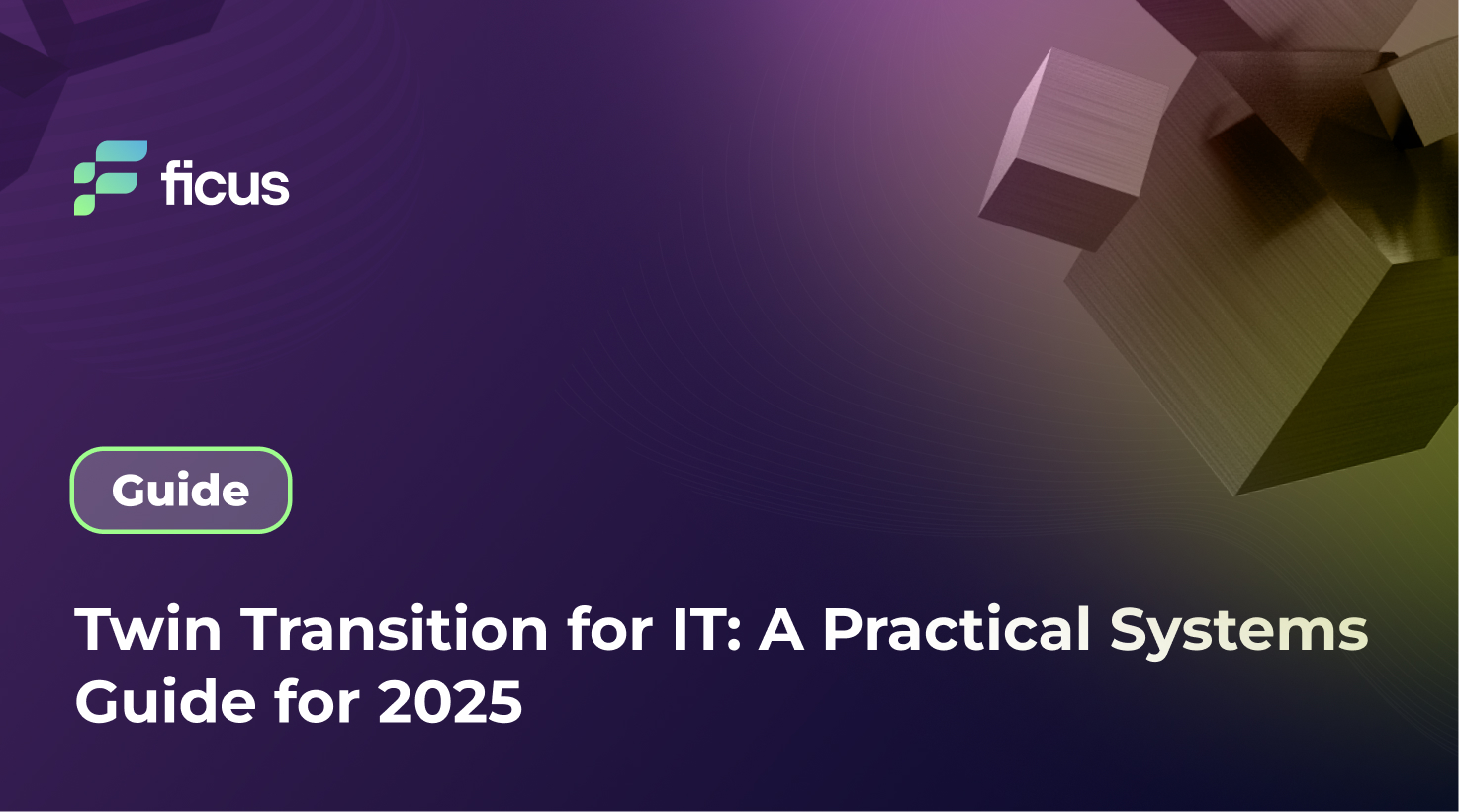Cloud native applications transform how businesses approach software development, offering unparalleled scalability, flexibility, and resilience. These applications are purpose-built for cloud environments, allowing organizations to innovate and adapt quickly. As the market for cloud-native technologies continues to expand, with projections indicating significant growth across industries, mastery of these technologies is becoming a strategic imperative for businesses worldwide, as reported by MarketsandMarkets.
The transition to cloud-native architecture has its challenges. As AWS outlines, successful adoption requires thorough preparation and a deep understanding of the principles that underpin these dynamic systems. The advantages of cloud-native databases, as explored by MongoDB, further illustrate the agility and efficiency these technologies bring to the table, enabling businesses to stay ahead of the curve. This article by Ficus Technologies delves into the core concepts, driving technologies, and prospects of cloud-native solutions, offering a comprehensive analysis of how these innovations are shaping the future of software development and the broader business landscape.
- Cloud-native development enhances efficiency, resilience, and scalability.
- Embracing cloud services enables faster deployment and innovation.
- Ficus Technologies facilitates smooth cloud-native transformations.
The Essential Shift to Cloud-Native Development
Adopting cloud-native development goes beyond just new technologies—it’s a fundamental transformation in how software is conceived and managed. Traditional development methods impede progress, while cloud-native solutions enable faster scaling, adaptation, and innovation. By integrating cloud-native technologies such as containers, microservices, and orchestration tools, software becomes adaptable, resilient, and primed for rapid market demands. This paradigm empowers businesses to accelerate innovation, enhance customer experiences, and achieve better market positioning.

Advantages of Cloud-Native Strategies
In today’s fast-paced business world, adaptability is crucial. Cloud-native development provides a significant competitive edge. Instead of cumbersome, monolithic applications, businesses can develop modular microservices that can be deployed and scaled independently. This approach results in faster updates, agile pivots, and a business model that’s always market-ready. Embracing cloud-native practices isn’t just about keeping pace; it’s about leading, optimizing costs, and driving innovation that distinguishes you from competitors.
Elevating Standards with Cloud-Native Software
Cloud-native software development redefines how applications are designed, built, and managed. Moving away from monolithic systems, cloud-native software emphasizes microservices—small, independently deployable units that can be dynamically configured. This model prioritizes continuous integration and continuous delivery (CI/CD), ensuring that your software remains updated, optimized, and responsive to business needs.
Key Elements of Cloud-Native Architecture
Cloud-native architecture is founded on critical principles like microservices, containerization, dynamic orchestration, and Infrastructure as Code (IaC). Microservices divide complex applications into manageable components, each scalable and independently managed. Containers ensure portability across environments, while Kubernetes manages orchestration, keeping operations smooth regardless of complexity. IaC introduces automation and reliability into infrastructure management, speeding up deployment and reducing errors.
Redefining Development: Cloud-Native vs. Traditional
Comparing cloud-native development with traditional methods reveals significant differences:
| Aspect | Cloud-Native | Traditional |
| Architecture | Modular microservices | Monolithic, all-in-one |
| Deployment | Continuous with CI/CD | Periodic, often manual |
| Scalability | Independent component scaling | Vertical, limited scalability |
| Flexibility | High, easy updates | Low, complex updates |
| Infrastructure | Automated with IaC | Manual, error-prone |
| Resource Efficiency | Optimized with containers | Often over-provisioned |
| Resiliency | Built-in, auto-recovery | Dependent on backups |
| Speed | Rapid development cycles | Slower, monolithic |
| Cost Efficiency | Higher due to optimization | Often lower, inefficient |
| Tech Stack | Modern: Containers, Kubernetes | Traditional: VMs, physical servers |
| Integration | API-driven, flexible | Custom, expensive |
Cloud-native methodologies set a new standard for agility, efficiency, and resilience in application development.
Cloud is the digital wonderland of Internet of Things, powered by Artificial Intelligence and Big Data.
Enamul Haque
The Pillars of Cloud Natives Applications Development
Microservices: Core Components
Microservices are the foundational units of cloud-native applications. Each microservice focuses on a specific function within the broader system, allowing independent development, deployment, and scaling. This modularity enhances flexibility and simplifies updates, making it ideal for businesses aiming to stay ahead.
Containerization: Consistency Across Environments
Containers play a crucial role in the cloud-native paradigm by packaging applications and their dependencies into portable units. This ensures consistent performance across different environments, a cornerstone of the cloud-native approach.
Orchestration: Streamlining Operations
Managing numerous containers and microservices could only become manageable with proper orchestration. Tools like Kubernetes automate cloud-native applications’ deployment, scaling, and operation, maintaining efficiency even under changing demands.
Continuous Improvement: DevOps and Agile
In cloud-native development, DevOps and Agile methodologies are key to continuous improvement. DevOps integrates development and operations, creating a seamless, automated CI/CD pipeline. Agile fosters iterative development, enabling teams to adapt and continuously enhance products quickly. Together, they drive the speed and reliability essential in the cloud-native ecosystem.
Scalability: Built for Growth
Cloud-native applications are inherently scalable, thanks to their modular design and containerized deployment. This allows horizontal scaling—adding more instances as needed—without disrupting the system. Such flexibility is vital for businesses handling fluctuating demands, rolling out updates, and experimenting with new features.
Resilience: Built to Last
Cloud-native solutions are designed with resilience in mind. They are engineered to continue functioning even in the face of failures. With built-in fault tolerance and automated failover mechanisms, these systems recover quickly, minimizing disruption. By distributing services across multiple cloud regions or availability zones, cloud-native architecture ensures operational continuity during outages.
API-Driven Flexibility
APIs are central to cloud-native technologies. They enable seamless communication between microservices, facilitate the integration of new services, scale existing ones, and adapt to evolving business needs. Well-crafted APIs are essential for maintaining the flexibility and scalability inherent in cloud-native software.
Automation through Infrastructure as Code
Infrastructure as Code (IaC) applies the same rigor to infrastructure management as to software development. By managing infrastructure through code, IaC enables automation, reduces errors, and accelerates deployment—key advantages of cloud-native architecture.
Serverless: Streamlining Development
Serverless architecture enhances the cloud-native model by removing the need for infrastructure management. Developers focus solely on writing code, while the cloud provider handles deployment, scaling, and resource management. This simplification reduces costs and allows businesses to pay only for the resources they use.
Unlock Your Cloud Potential with Ficus Technologies Now!
Contact UsBenefits of Cloud-Native Applications
Accelerated Deployment
Cloud-native applications significantly reduce deployment cycles. By using microservices, containers, and CI/CD pipelines, businesses can rapidly introduce updates and new features, ensuring they remain competitive and continuously deliver value.
Enhanced User Experience
Cloud-native applications are designed for optimal performance under heavy loads. Their scalability and resilience ensure they can handle traffic spikes, recover quickly from failures, and consistently provide a smooth user experience. Integration with AI and advanced analytics further enhances customer engagement through real-time, personalized interactions.
Simplified Infrastructure Management
The cloud-native approach simplifies infrastructure management. Containers, orchestration tools, and IaC automate many processes, reducing the burden on IT teams and allowing them to focus on strategic initiatives that drive business growth.
Cost Efficiency
A major benefit of cloud-native technologies is cost efficiency. Containerization optimizes resource usage, ensuring minimal waste. Additionally, with pay-as-you-go models from cloud providers, businesses only incur costs for the resources they actually use. Cloud-native solutions also reduce the risk of vendor lock-in, offering flexibility in choosing the most cost-effective options.
Superior Reliability
Cloud-native applications set the standard for system reliability. Their microservices architecture, combined with dynamic orchestration and automated failover mechanisms, ensures uninterrupted operation even during failures. Continuous monitoring, automated testing, and real-time alerts enhance reliability by proactively addressing issues before they impact users.
Flexibility and Vendor Independence
Cloud-native development emphasizes open standards and technologies, ensuring businesses are not confined to a single vendor. This vendor-neutral approach offers flexibility to switch providers or integrate new technologies as needed, reducing risks and enhancing strategic agility. Applications built on cloud-native architecture are portable across different environments, ensuring adaptability and independence.
Future Trends in Cloud-Native Development
Growth of Serverless Computing
Serverless computing is expected to play a significant role in the future of cloud-native development. As businesses aim to streamline operations and reduce costs, serverless architectures provide an attractive solution by abstracting infrastructure management, allowing developers to focus solely on code. This evolution will likely lead to greater efficiency, flexibility, and scalability in cloud-native applications.
AI and Automation Advances
AI and automation are set to drive advancements in cloud-native development. AI-powered tools can automate various development lifecycle stages, from code generation to testing and deployment. Additionally, AI enhances monitoring, security, and optimization efforts, resulting in more intelligent, resilient applications. Integrating with cloud-native solutions will foster further innovation and operational efficiency as AI technology progresses.
Expansion of Multi-Cloud and Hybrid Strategies
Adopting cloud-native development leads to an increase in multi-cloud and hybrid cloud strategies. These approaches allow businesses to leverage the strengths of multiple cloud providers, avoid vendor lock-in, and optimize costs. The rise of multi-cloud and hybrid environments will drive the development of new tools and practices for managing and orchestrating applications across diverse cloud platforms.
Cloud-native development revolutionizes creating modern applications, offering scalability, resilience, and adaptability. By embracing cloud-native architecture, businesses can accelerate innovation, reduce operational costs, and deliver superior user experiences. However, transitioning to a cloud-native model presents challenges such as increased complexity, heightened security risks, and the need for specialized skills. As cloud-native technologies evolve, organizations that invest in these practices will be well-positioned to thrive in an increasingly competitive and dynamic digital landscape.
Partner with Ficus for Cutting-Edge Cloud-Native Solutions
When it comes to cloud-native applications, having a knowledgeable partner is crucial. We bring deep expertise in cloud-native technologies and a proven track record of helping businesses build, deploy, and manage applications that are robust, scalable, and aligned with your strategic goals.
Our partnership approach ensures that we work closely with you to understand your unique needs, tailor solutions that fit, and provide ongoing support as your business evolves. With our expertise in cloud-native development, microservices, containers, and Kubernetes, we can elevate your business—optimizing existing infrastructure or building from the ground up, as demonstrated in our crypto wallet case study.Ready to transform your vision into reality? Contact us to discuss how we can leverage cloud-native technologies to help you achieve your business objectives.
Final Words
Cloud-native development represents a transformative approach to building modern applications that are scalable, resilient, and adaptable. By embracing cloud-native principles, businesses can accelerate innovation, reduce costs, and deliver superior customer experiences. However, the journey to cloud-native development also comes with challenges, including complexity, security concerns, and the need for new skill sets. As cloud-native technologies continue to evolve, organizations that invest in these practices will be well-positioned to thrive in an increasingly competitive and dynamic digital landscape.
Cloud-native applications are software specifically designed to harness the full potential of cloud computing environments. Built using microservices architecture, these applications are deployed in containers and managed with tools like Kubernetes, offering scalability, resilience, and flexibility. This architecture allows businesses to innovate rapidly and respond effectively to market changes.
The primary difference lies in architecture and deployment. Traditional applications are often monolithic, whereas cloud-native applications are built with microservices, allowing independent development, deployment, and scaling. Cloud-native applications are designed for dynamic cloud environments, utilizing containers and orchestration tools to optimize performance and resource usage.
Cloud-native development incorporates technologies such as microservices architecture, containers (e.g., Docker), container orchestration tools (e.g., Kubernetes), Infrastructure as Code (IaC) tools (e.g., Terraform), and serverless computing platforms. These technologies work together to create scalable, resilient, and efficient applications in cloud environments.
Challenges include managing complexity, ensuring security, integrating with legacy systems, and acquiring the necessary skill sets. The distributed nature of cloud-native applications requires robust tools and practices for monitoring, security, and seamless integration with existing infrastructure.u003cbru003e
DevOps supports cloud-native applications by fostering collaboration between development and operations teams. Continuous integration and delivery (CI/CD) pipelines in DevOps enable faster and more reliable deployment. Automation, monitoring, and agile methodologies further enhance the efficiency and resilience of cloud-native applications.
Key trends include the rise of serverless computing, AI and automation advancements, and the expansion of multi-cloud and hybrid strategies. These trends drive innovation in cloud-native development, leading to more efficient, scalable, and adaptable applications across diverse cloud environments.
Cloud-native architecture is crucial because it allows businesses to achieve greater agility, scalability, and cost efficiency. By adopting cloud-native practices, companies can quickly develop and deploy new features, respond to market changes, and optimize resource usage. This architecture supports continuous innovation and improved customer experiences, helping businesses stay competitive in the digital era.
To secure cloud-native applications, businesses should implement comprehensive strategies, including securing containers, managing access controls, encrypting data, and regularly updating security policies. Continuous monitoring, automated vulnerability scanning, and adherence to cloud security best practices are also vital to mitigating risks.
Kubernetes is pivotal in cloud-native development, providing a robust platform for container orchestration. It automates containerized applications’ deployment, scaling, and management, ensuring they run efficiently and reliably across various environments. Kubernetes also supports features like self-healing, load balancing, and automated rollouts, making it indispensable for managing cloud-native applications at scale.








